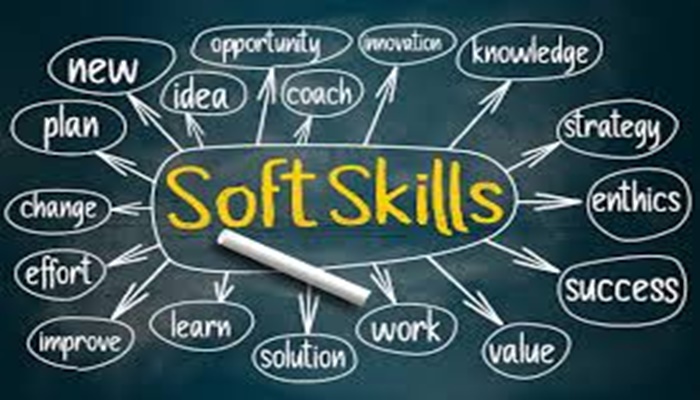Mentorship is foundational. Without it, workforce programs risk becoming just another short-term training exercise. Leaders serious about long-term talent development should treat mentorship not just as a learning tool, but as a lever for confidence, inclusion, and commitment.
The idea of experienced workers guiding the next generation isn’t new. But doing it well today takes intention. Good workplace mentors teach the job, model soft skills, and help people feel like they belong—and stay.
Mentors should teach core skills, yes, but also how to communicate and understand workplace culture—skills often called “soft,” but essential for success.
BUILD A MENTORSHIP MODEL THAT FITS YOUR ORGANIZATION
Mentors can come from different parts of the business, depending on structure. Some companies have experienced staff nearing retirement. These employees can offer invaluable experience as mentors while opening space for younger staff to step up.
But they’re not the only source of mentorship. A line supervisor—still early in their career—can also mentor someone just starting out. Good mentoring takes patience and clear feedback, and knows when to let mentees lead.
TEACHING THE JOB AND SOLVING PROBLEMS
A mentor’s first role is to teach. They help new employees build the skills to succeed in the role. They do this in a few key ways:
• Clearly explaining what the job requires.
• Then showing how it’s done; nothing beats a good demonstration.
• Letting the mentee try it with hands-on guidance.
These steps work best together, and good mentors adjust as they go.
Things don’t always go to plan, which is why mentors should also teach troubleshooting—from figuring out what the problem isn’t, to applying critical thinking and problem-solving. These are core job skills.
TEACHING THE SOFT SKILLS THAT SHAPE CAREER SUCCESS
Technical skills are just one part of the mentoring relationship. What makes mentors essential is their ability to unlock the soft skills that drive success.
Take workplace culture: Mentors help new employees understand how things really work. If teamwork matters, they need to know it’s OK—and expected—to step in and help. They’ll also learn that support goes both ways. They don’t have to solve every problem alone. Understanding the culture helps people feel like part of the team.
Mentors also pass on workplace norms. For example, new workers don’t always realize how important timeliness is. Showing up on time signals reliability and commitment to the job and the team.
Communication is another key norm—asking questions, giving input, and doing both professionally. Mentors guide them in learning these norms, so they become valued team members. We often call these “soft skills,” but that label downplays how critical they are.
Employers want team players, communicators, respectful colleagues, and problem-solvers. Soft skills help people succeed—in any role, with any employer. And it’s mentors who pass them on.
SUPPORTER AND CONFIDANT
Mentors also play another vital role: supporter and confidant. New employees, especially those from outside the mainstream workforce, often need someone to talk to when things aren’t going well. Someone who’ll listen and help them through tough moments. A mentor in their corner can be the difference between staying and walking away.
My first real job was in a hotel kitchen. I’d just pulled on my crisp chef whites when the executive chef dropped a massive bag of onions on the bench and told us apprentices to start peeling. One apprentice bragged about being the fastest. Another talked nonstop. I just peeled—all day. The next day, the chef reassigned us: The talker went to the staff cafeteria, the speedster to banquet prep, and me to the fine-dining restaurant. That’s when I realized: It wasn’t about onions. It was about how we showed up for the work. He was mentoring in real time, watching, listening, and guiding us based on more than just output. That stuck with me: Sometimes the best mentors say little, but see everything.
STEPS FOR LEADERS
Mentorship has shaped my path from apprentice chef to leading workforce programs across continents. Here are practical steps to cultivate a robust mentorship culture in your organization:
1. Look for people who lift others. The best mentors aren’t always the loudest. They’re the ones who support others and share what they’ve learned.
2. Keep it simple and focused. Set clear expectations for time and purpose. Mentorship works best when everyone knows why they’re there.
3. Be smart with pairings. Match people by shared goals. Fit matters more than hierarchy, and if it doesn’t work, reset and try again.
4. Give them a loose framework. A few prompts or goal-setting tools go a long way—especially early on.
5. Acknowledge the effort. A thank you or public nod shows mentoring is valued.
6. Keep learning from it. Check in often. Ask what’s working and what’s not. Like any workforce strategy, mentoring should adapt to your people.
A TWO-WAY STREET
Mentorship isn’t a one-way street. Mentors can also learn from new team members, who might have a new approach to the work or the workplace, bringing in fresh ideas to revitalize a business. The mentorship can be just as enlightening for the mentor as it is for the mentee.




















